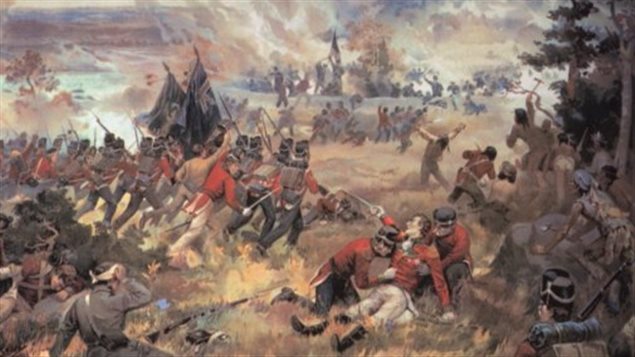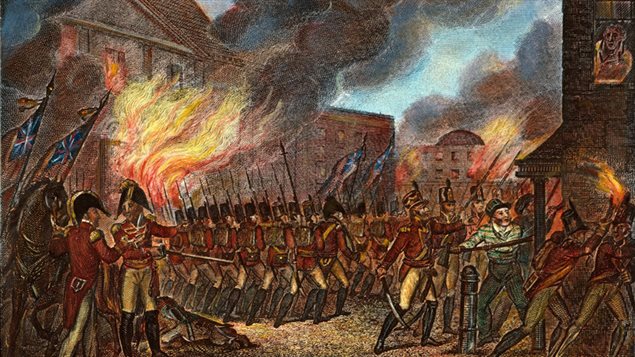August 19th 1814 was hot and muggy day. The War of 1812 between the US (and France) and Britain had now been dragging on for two years.
During that time, the US had tried unsuccessfully on several occasions to occupy the British colony that would become Canada. Defended by a small number of British regulars and Canadian militia, the Americans had been turned back in several battles. They had however, managed to burn the city of York (Toronto) and cause havoc elsewhere.

By 1814, the British war with France was over, and Britain could send more forces against the Americans.
The Bladensberg Races
Thus on August 19th, a large British fleet under the command of Admiral Cochrane, landed a force of over 4,000 marines and regulars on the coast in Maryland. The army proceeded toward the American capital of Washington about 60 kilometers away.
Led by Maj.Gen. Robert Ross, their goal was to punish the Americans for their burning of York and other smaller villages in Canada.

A force of about 500 American regulars and over 6000 militia was assembled to stop the British.
In the late morning, the two sides met at a place called Bladensberg, Maryland. Although the British suffered more casualties in the brief but deadly skirmish, the American forces broke and ran in the face of disciplined British musketry.
The battle became known as the Bladensberg Races, making fun of the speed at which the Americans fled.
In the early evening, the British marched virtually unopposed into Washington where they began to carry out the orders of Admiral Cochrane to destroy and lay waste to the American capital.
The British began burning the major buildings in the city, including the “President’s House”, the Senate and House of Representatives, the Library of Congress and the Treasury.
While the orders were to completely level the city, the destruction however, only lasted a day . The hot, muggy summer night was creating a highly charged and unstable atmosphere soon to be transformed into a violent summer storm.
On August 25th, the skies suddenly darkened as heavy black cloud swept over the region. An extremely violent thunderstorm ensued, with heavy rain dousing the flames. A brief tornado was reported to have touched down as well
Many residents, and several British soldiers were killed in the storm and General Ross ordered a withdrawal to the safety of the British fleet in Chesapeake Bay.
In an interesting note, the British, while not destroying the offices of the newspaper, The National Intelligencer, stole all the letter C’s from the presses so that the paper could not print nasty comments about Admiral Cochrane after their withdrawal.
The President’s House while damaged by flame and smoke, was not fully destroyed. It’s pale-sandstone exterior was damaged by soot and smoke.
The President’s House while damaged by flame and smoke, already whitewashed when built, was not fully destroyed. To that point though, it had always been commonly referred to as either, the “president’s house” or the “executive mansion”
As it was being rebuilt, it was decided to re-paint it- using an oil-based paint this time, to cover the smoke damage and thereafter with it’s fresh coat of white paint, people began being referring to generally it as the “White House”. Perhaps, (and this is conjecture) because the freshly white-painted house stood out from other charred buildings in the city.
In any case, in 1901 then President Theodore Roosevelt officially renamed the building as the “White House”.







For reasons beyond our control, and for an undetermined period of time, our comment section is now closed. However, our social networks remain open to your contributions.